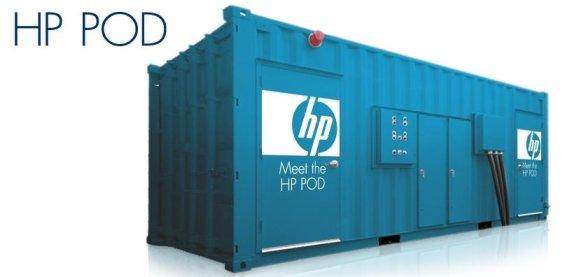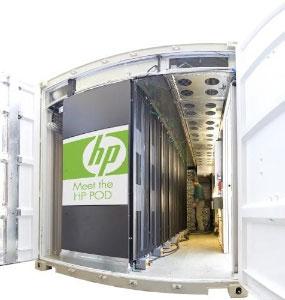Imagine a scenario where a data center runs out of space. What does the business need to do? It needs to find more space, build the infrastructure, racks, cooling, power and everything that needs to be done to make it a real brick and mortar data-center. Anything from a year plus to build something like that. Wait and spend a lot of money, before any real results come out of it.
Well, those are all scenarios from the past, if vendors like HP are to be believed. They’ve built an entire data center in a 8 ft by 40 ft container, complete with racks, cooling, power and everything it takes to run a data center.

With support for up to 3500 servers in that small space, they promise 50% power savings compared to a traditional data center. What does it mean for data centers?
According to a study done by Christian Belady from HP, the cost of power directly consumed by a server would be almost the cost of the server of $3900 over 3 years. In addition, the cost of power and cooling infrastructure to support a server(not counting power directly used by server) would be $1100 per server per year. For the 3-year life of the server, this equates to $3,300 or again close to the cost of the server. If all this was reduced to 50%, you do the math for 3500 servers, and see how much you save.

Besides the 50% power saving, what I really like is the fact, that its a complete structure, with everything needed to run a full data center, delivered within 6 weeks of purchase. Now where can you get a brick and mortar data center like that.
There are several downsides to this concept though. First, the cost. While it is not clear what HP is pricing the POD at. Usually systems such as these cost upwards of $500,000 for other containerized data centers such as those by Sun. For a data center, its a significant amount to put in upfront, than if they had to build capacity slowly and with investments they were comfortable with.
Secondly, Data center in a box concepts such as these are widely regarded as temporary solutions, such as Backup data centers, in case of a problem to the primary data center. For example, it would have been an ideal solution as backup data center, when the transformer blew out and disrupted a section of The Planet’s data center. But as a primary data center? I don’t know many employees who would be willing to work in a box
However, there are many businesses and Web Hosts that can find use of a new data center delivered to them within 6 weeks. If you are one of those, do check out http://www.hp.com/go/pod
About the Author:

Sangeetha Naik is co-Founder and Director, Poornam(Bobcares). With 9 years of experience in the Web Hosting industry, she speaks in various conferences about how Web Hosts can cost effectively setup and run their Support Operations.






I think these are the next gen infrastructure setups which would be immensely used in an environment such as cloud computing. Maybe the architecture is such that with minimum fuss the servers can be managed, so the employee does not necessarily work “inside” the box.
I’m curious of what the cost would be to build a similar setup using traditional methods, including the air conditioning, racks, etc. It would be interesting to see how much of a markup HP is putting on these.
Regards,
John C. Young
Managing Director
Internet Gateway of South Beach
http://www.igsobe.com
Sun Microsystems done this before HP did.